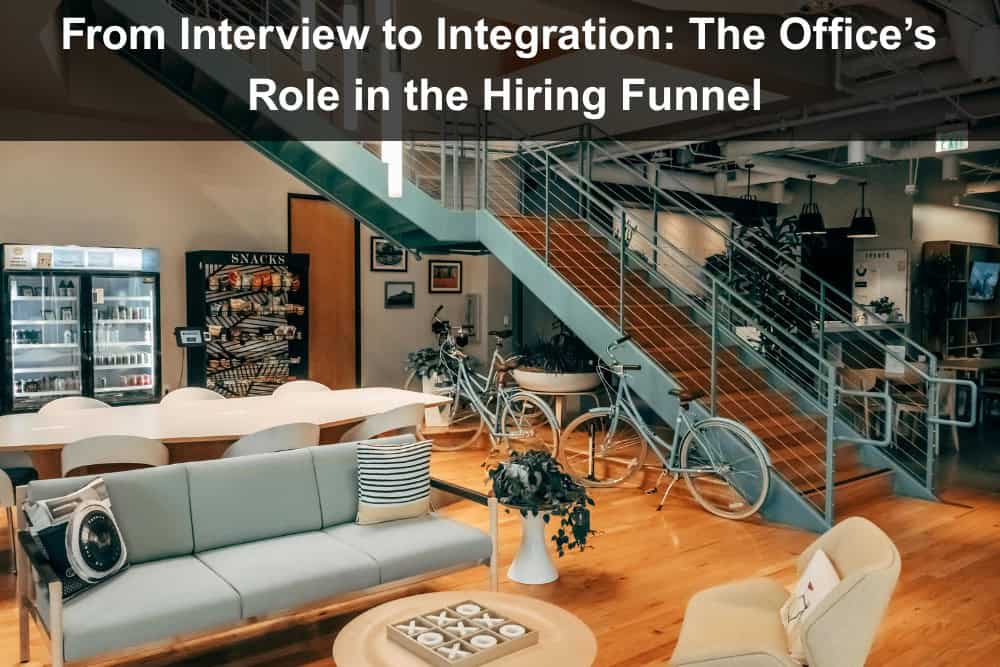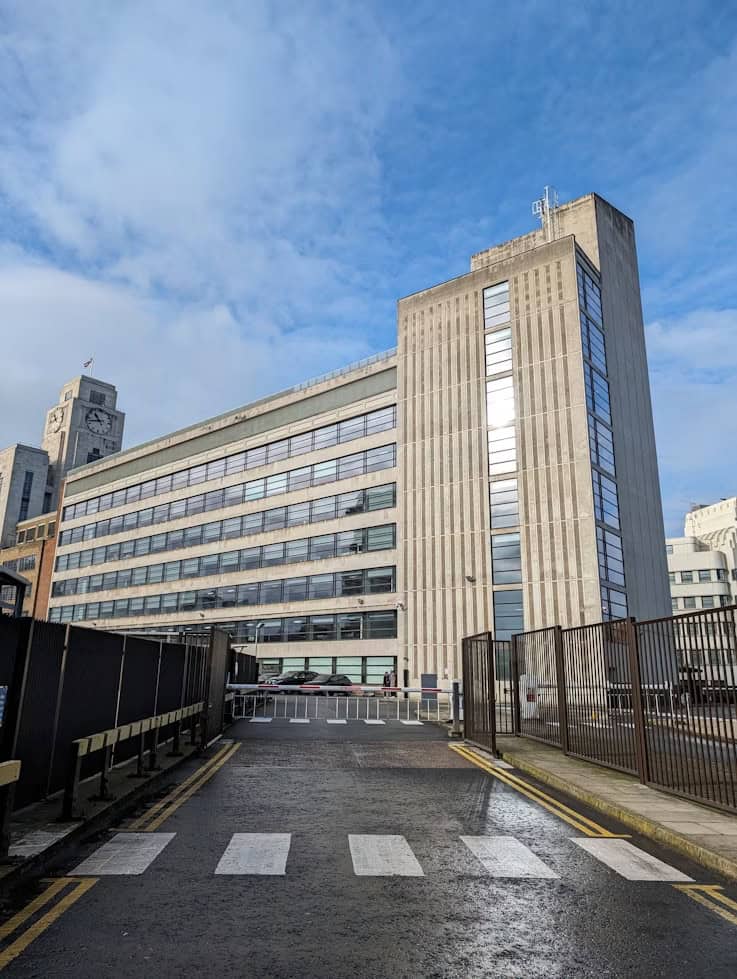
Traditionally, the hiring process ends with the acceptance of a job description. However, this viewpoint is increasingly outdated. The role of the office extends far beyond merely being a physical location where work gets done. It is an integral part of the entire process, influencing candidate impressions, onboarding outcomes, and long-term employee engagement.
Today, companies must view their office as an extension of their employer brand and onboarding ecosystem, focusing on employer branding. From the first visit to cultural integration, every element of the office environment shapes the employee journey. Focusing on the office’s role in the hiring funnel helps companies create a more cohesive and engaging experience for new hires.
Rethinking the Hiring Funnel
The traditional hiring funnel—comprising stages like job posting, interview, offer, and hire—no longer suffices in today’s dynamic work environment. In an era of hybrid and remote workplaces, the hiring process must evolve to include the work environment itself as a crucial signal to candidates and a scaffold for integration, creating an effective recruitment funnel, data data-driven recruiting funnel, recruitment funnels, and the recruiting process, as well as a recruitment marketing funnel.
Modern hiring processes must consider how well an office communicates company culture, leverages technology for efficiency, and supports new hires through transitional phases – whether you’re hiring developers, managers, or looking to fill a content position. The office is not just a backdrop but a dynamic participant in the recruitment funnel, influencing everything from candidate attraction to long-term retention.
A well-designed office with open spaces and branded visuals can effectively convey the company’s values and commitment to its employees. This narrative can be a decisive factor in attracting and retaining top talent.
Interview Phase: First Contact with the Office
The interview process is often a candidate’s first exposure to the office environment. Whether the interview is in-person or virtual, the environment they encounter plays a significant role in shaping their perception of the company. A modern, aesthetically appealing workspace signals organization and care, making a lasting impression on candidates during the interview rounds.
For companies using one way video interview software, creating a welcoming digital environment becomes equally important, as candidates will associate the platform’s user experience with the company’s overall professionalism. Even small details, such as a seamless check-in process, can elevate the candidate experience.
Tools like a cheap AI receptionist can:
- Automate greetings and logistics, creating a polished experience for both candidates and internal staff
- Reduce friction
- Make the office environment more inviting
Environmental cues also play a major role. Design elements in the office, such as:
- Open spaces
- Branded visuals
- Inspirational quotes tell a story about company values. These impressions linger long after the interview ends and can significantly impact a candidate’s decision to accept a job offer.
Post-Interview: Keeping Candidates Warm

After the interview, there’s often a waiting period before a decision is made. This lull presents a valuable opportunity for interviewing candidates to keep them engaged. The office environment can serve as a content engine, creating short videos or virtual walkthroughs to maintain interest and excitement.
Updates or thank-you videos shot from within the actual workspace can be sent to candidates. These personalized touches reinforce the connection and keep candidates “warm” and involved. Turning the office into a narrative tool helps reduce the candidate drop-off rate and increases the likelihood of offer acceptance.
Keeping interested candidates informed and engaged during this application stage is crucial. It not only enhances the candidate experience but also positions the company as a thoughtful and organized employer, increasing the chances of attracting the best candidates and building a strong candidate pipeline while showcasing the candidate’s capabilities in the final stage of the recruitment process.
Our recruiting efforts play a significant role in this process, especially for job applicants, including screening candidates, outreach campaigns, and potential candidates.
Pre-Onboarding: Setting the Stage
As candidates move closer to joining the company, the pre-onboarding phase becomes critical. Giving candidates early access to digital tools like Slack channels, onboarding portals, or introductory Notion pages helps bridge the psychological gap before day one. For distributed teams, these digital workspaces must be intuitive and welcoming.
Automation plays a vital role in this phase. Tools like:
- AI receptionists or onboarding chatbots can help answer FAQs
- Schedule welcome calls
- Share resources with minimal human intervention. These technologies ensure that no one slips through the cracks, especially in remote or asynchronous environments.
For companies with distributed operations or frequent employee relocations, providing access to reliable truck rentals can also streamline logistics during the pre-onboarding phase, ensuring smooth transitions for new hires. Setting the stage for a smooth transition ensures that new hires feel prepared and excited about their first day. This proactive approach can significantly enhance the overall onboarding experience.
Onboarding: Welcome to the Ecosystem
Once onboarding begins, the office transforms into a performance space, welcoming new hires and helping them find their rhythm. A curated, visually impressive workspace helps reinforce a sense of pride and belonging. Investing in decor, materials, and layout isn’t just aesthetic—it’s strategic. For example, the use of large-format porcelain panels can modernize interiors, add durability, and elevate the visual appeal of lobbies, meeting rooms, or open-concept workspaces.
Digital onboarding is equally important. New hires need smooth access to:
- Channels
- Resources
- Calendars
- Conversations
Whether it’s joining team Slack groups or attending welcome Zoom sessions, the goal is to reduce ambiguity. Virtual office tours, either live or pre-recorded, can help replicate the sense of orientation that in-person tours provide. Creating a welcoming ecosystem ensures that new hires feel supported and valued from day one. This approach fosters a positive and productive work environment, leading to hiring congratulations for the team.
Integration: Embedding in the Culture

Integration is the next critical phase in the hiring funnel. Culture must be demonstrated daily, not just explained during onboarding. Offices that offer structured rituals like Monday huddles or weekly lunches allow new hires to experience inclusion firsthand. Even informal conversations at the coffee station play a big role in helping employees feel like part of the team.
Design also supports integration. Open and inviting layouts, communal spaces, and thoughtful aesthetics create a sense of cohesion and comfort. When the space feels good to be in, people are more likely to connect and contribute. Personalized tech can enhance this further. AI systems can suggest lunch buddies, ping reminders about social events, or recommend Slack threads based on interests. These small nudges make a big difference in helping people acclimate quickly and become integral parts of the team.
Measuring the Office’s Impact
To understand the effectiveness of the office environment in the hiring and onboarding process, it’s essential to measure its impact. Gathering feedback from candidates and new hires about their experience of the space—both physically and digitally—can provide invaluable insights for improvement. HR teams can link these impressions to hard recruitment metrics like offer acceptance rates, time-to-productivity, or employee Net Promoter Scores.
Recruiting teams that support integration effectively tend to have lower attrition and higher engagement within the first 90 days. Tracking these metrics to track allows companies to continuously refine their office environment to better support the hiring and onboarding process. This data-driven approach ensures that the office remains a powerful tool in attracting and retaining top talent.
Conclusion: Rethinking What the Office Means
The office is no longer just a setting—it’s a central actor in the story of hiring. Whether candidates are walking through your doors or logging in from across the world, the experience they have is shaped by how the office looks, feels, and functions. HR and operations teams should audit their office experience, from design and layout to digital workflows and automation.
Every aspect should be aligned with the goal of creating a welcoming, engaging journey from interview to integration, including input from the hiring team. The future of work may be hybrid, remote, or flexible, but the idea of the office remains powerful.
Frequently Asked Questions
Why is the office environment important in the hiring process?
The office environment is important in the hiring process because it significantly affects candidates’ impressions and can determine their long-term engagement and satisfaction within the organization. A positive atmosphere not only attracts talent but also facilitates successful onboarding.
How can the office environment be used during the post-interview phase?
The office environment can be effectively utilized by providing engaging content, such as videos and virtual walkthroughs, to sustain candidate interest and enthusiasm during the post-interview phase. This approach not only keeps candidates informed but also reinforces their positive perception of the company.
What role does automation play in the pre-onboarding phase?
Automation plays a crucial role in the pre-onboarding phase by utilizing tools like AI receptionists and onboarding chatbots to efficiently answer FAQs, schedule welcome calls, and provide resources, thus facilitating a seamless experience for new recruits.
How can companies measure the impact of their office environment on hiring success?
Companies can effectively measure the impact of their office environment on hiring success by collecting feedback from candidates and new hires while correlating this data with critical metrics such as offer acceptance rates and time-to-productivity. This approach provides valuable insight into how the workspace influences hiring outcomes.
What are some ways to integrate new hires into the company culture?
Integrating new hires into the company culture can effectively be achieved through structured rituals, open office layouts, and personalized technology, fostering a sense of inclusion and belonging. This approach ensures that new employees feel valued and become integral members of the team.
Suggested articles:
- 10 Ways to Elevate Employee Experience in the Workplace
- Top 5 Advantages of Using Coworking Spaces
- 10 Reasons a Company Store Benefits Employers and Employees
Daniel Raymond, a project manager with over 20 years of experience, is the former CEO of a successful software company called Websystems. With a strong background in managing complex projects, he applied his expertise to develop AceProject.com and Bridge24.com, innovative project management tools designed to streamline processes and improve productivity. Throughout his career, Daniel has consistently demonstrated a commitment to excellence and a passion for empowering teams to achieve their goals.